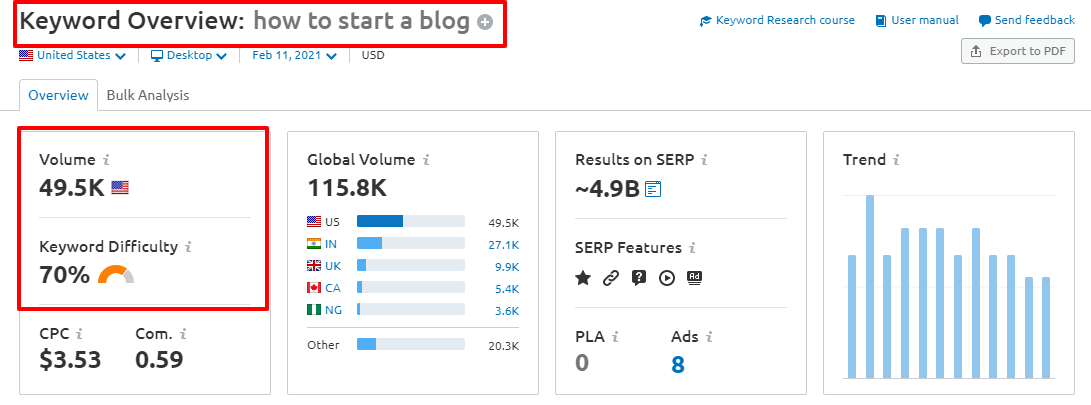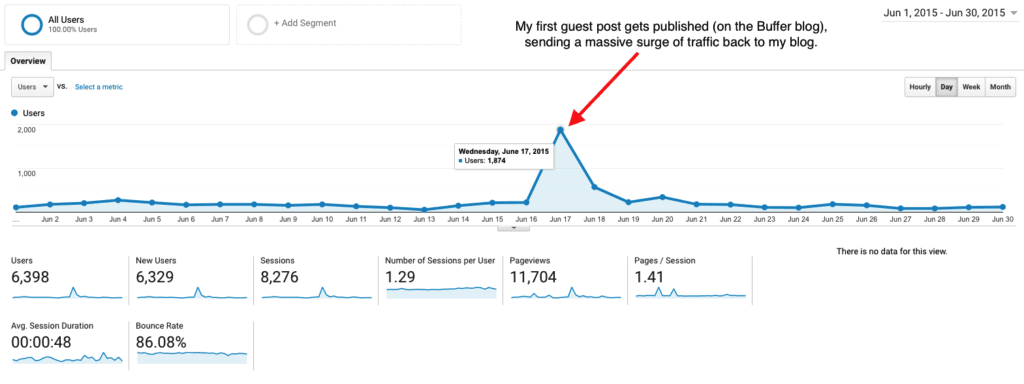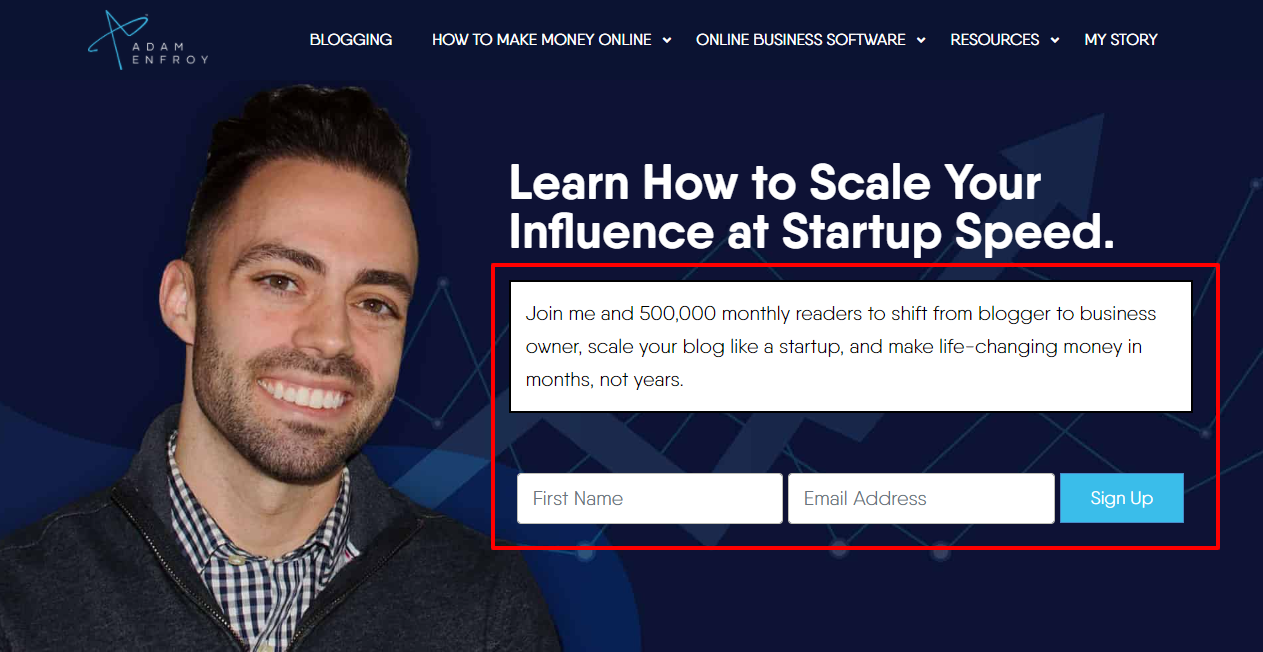How to scale organic traffic to your course website


So you’ve created a valuable course and launched your course website. And the only way you can seem to get decent traffic is by paying for ads. While paid ads are an excellent way of driving traffic to your website, they have one flaw—once you run out of budget, the flow of traffic stops. To have a consistent flow of quality traffic coming to your course website, you must implement a long-term sustainable solution. And, that’s why you should learn how to scale organic traffic to your course website.
The value of organic traffic
First off, organic traffic simply means the website visitors you get for free from search engines as opposed to any paid means.
The e-Learning industry is projected to be a whopping $243 billion by the end of 2022. If you’re to have your share of that pie, you must know how to scale organic traffic to your course website.


But before we look into how you can do that, let’s first examine why organic traffic is valuable.
Cost-effective
One of the most significant advantages of organic traffic is that it’s free. The only expenses you incur are the content creation costs. But, if you can create your own content, you only pay in the form of the time you spend on content creation.
Sustainable
One of the biggest drawbacks of promoting your course via paid ads is that the amount of money you spend on ads can quickly add up. And once you stop paying, the traffic stops. On the other hand, organic traffic is sustainable. As long as your content is live, it will drive traffic to your website for as long as the internet is there.
Authentic
People tend to trust organic content more than they do sponsored content. They tend to view sponsored content as content with commercial strings attached. Organic content is viewed as authentic. It simply seeks to offer valuable information—no commercial intent behind it.
The main caveat of organic content is that it doesn’t drive traffic to your course website as fast as ads do. However, once your content starts ranking, you get to enjoy a steady flow of traffic to your website. And as you may know, this translates to a steady stream of leads (students), resulting in the growth of your business.
Now that you know why organic traffic is so important, let’s quickly dive into how you can scale the organic traffic you drive to your course website.
6 ways to scale organic traffic to your course website
Many people think driving and scaling traffic to a website is difficult. It isn’t. You just need to know what to do to attract the right kind of traffic.
If the author of this post could scale website traffic from 0 to over 500,000 monthly visitors in under two years (as a new blogger), then you can too.
Here are six of the best ways how to do just that:
1. Think like a startup: Scaling organic traffic to your course website begins with a startup mentality
To succeed at scaling traffic to your website, you must make sure to lay the proper foundation. Just as in construction, you can’t build a skyscraper on a weak foundation. When building your course business, make sure you lay a foundation that will make it easy for you to scale your website traffic.
A good foundation starts with the right mentality. And to scale your website traffic, the right mentality is to treat your course website as a startup.
For most course creators, their main business asset is their course. That’s fair and fine. But you must also consider your website as a valuable business asset. After all, it is where you will do most of your selling. Sure, you may use a third-party website or online course platform like Teachable to host and sell your course, but your website plays a huge role in helping you attract customers to your course.
How do you treat your course website as a startup?
Scale your operations by outsourcing
One way of treating your course website as a startup is to outsource activities that:
- Are repetitive
- Take a lot of time
- Require expertise
Outsourcing may mean you will have to pay someone for their time and expertise, but it will help you scale faster.
Design effective growth strategies
Most startups are bootstrapped. For them to grow, they must design growth strategies that don’t require a lot of financial investment. As a course creator, you must take the same approach when scaling organic traffic to your website. Some free or low-cost growth strategies you can use include:
- Word-of-mouth marketing (WOMM): Encourage your family, friends, past students, and other people in your network to share your website URL with their networks.
- Partner with other course creators: Run marketing joint ventures with other course creators to cross-promote each other’s websites.
- Network with influencers: Network with influencers on social media and tag them in your posts. Just do it tactfully so that they appreciate the tag. This will result in them promoting your post.
The key to designing a growth strategy that works for you is to find people who appreciate your content. If you can motivate them to share your content, you’ll have a free marketing team driving traffic to your website.
To scale the organic traffic that comes to your website, focus on scaling the processes that produce results. Focus on them, and you’ll enjoy phenomenal growth in your course business.
2. Be wise: Conduct keyword research
To drive traffic to your course website, you must implement search engine optimization (SEO). And one crucial component of SEO you must get right is keyword research. This means discovering and using the keywords prospective students use to search for content relating to your course.
Doing so will help your content rank well on search engine results pages (SERPs), resulting in more people visiting your website.
Now, if your course website is relatively new, the chances are that more established websites are already ranking for some of your keywords. To outrank them, you must be smart about your keyword research.
A smart way of doing keyword research for new websites is to focus on long-tail keywords. These are keywords that consist of more than two words. They are easier to rank for as they usually have lower difficulty scores than head (single-word) keywords.
Ensuring that you use the right keywords in your content and website copy requires that you must consider a few factors:
- Difficulty score: This is a metric that shows the average difficulty of ranking for a particular keyword.
- Search volume: Search volume is the average number of search queries containing a particular keyword.


Keywords that will help you rank and drive traffic to your website must have a high search volume and low difficult scores. Otherwise, find keywords that strike a good balance between the two.
Take your time researching your keywords. If you don’t have the bandwidth or sufficient knowledge to do it yourself, you can always outsource to a freelance SEO expert.
3. Design to satisfy: Write website copy and content for search intent
Search intent is an essential traffic generation strategy many neglect. It refers to the reason behind a user’s search query. Search intent can be classified under:
- Navigational intent: This refers to users who are looking for a particular website or web page.
- Informational intent: Users with informational intent are looking to get more information about a particular topic.
- Commercial intent: Searchers with commercial intent are researching products with the intention of purchasing soon.
- Transactional intent: Users with transactional intent are past the research stage and are ready to transact. In this case, they visit your website intending to enroll in your course.
Understanding search intent will help you create website copy and blog content that meets your users’ needs. That’s the kind of content that attracts the right kind of traffic.
Armed with your keywords and search intent data, you can create a content calendar that will help you ensure you consistently publish traffic-generating content. You can create a simple content calendar in a Google Sheet with columns for (among others):
- Your target keyword
- Title
- Word count
- Monthly search volume
- Status (where each content piece is in the production cycle)
Planning your content in advance will help ensure that you’re consistently publishing fresh content. Search engines love this and will reward you by ranking your website well, resulting in you getting a large portion of the website traffic in your niche.
4. Link up: Scale your organic traffic through link building
A backlink is a link from another site linking to your website. Backlinks are a vote of confidence that your website can be trusted to provide relevant and authoritative content. As a result, your course website’s domain authority (DA) will improve, leading to its ranking higher on the SERPs.
Of course, ranking high has the benefit of helping you drive traffic to your website. However, backlinks also help you drive relevant traffic to your website in another way. When people come across your link on another website and click on it, they’ll be directed to your website.
Because backlinks play a crucial role in driving organic traffic to your website, you must be strategic in the way you build them. Here are a few ways you can do that:
Create an outreach campaign
A link-building outreach campaign is the process of reaching out to publications asking them to link to a relevant blog post on your website. To enjoy high success rates, your blog post must offer value to the publication’s audience.
Publish as many guest posts as possible
Guest posting is the act of publishing blog posts on another website. When guest posting, you can either get a backlink within the post itself or by including a link to your website in the author bio section.


Create “link-worthy” content
The best way to build backlinks is to create content other websites will naturally link to. This involves (among other things) creating the best piece of content on a particular topic, publishing original research, or creating infographics.
Participate in roundup posts
Sharing your thoughts with other subject matter experts in roundup posts is another excellent way of building links to your website. The site that hosts the roundup post will link back to your site in the section where your contribution is.
One thing to note about link building is that links have and will always play a critical role in ranking content and driving traffic to websites. So, go all out on your link-building campaign. The rankings and the traffic you tap into on other sites are definitely worth the effort.
If you play your cards right, link building could be the number one way you’ll scale organic traffic to your course website.
5. Hit send: Leverage email marketing
Email marketing is another excellent strategy for driving organic traffic to your website.
To leverage this strategy, you must start and grow your email list right from the day you launch your website.


To grow your email list fast:
- Create and promote a lead magnet: A lead magnet is a free resource you give people in exchange for their email addresses. For it to be effective, it must appeal to your target audience and offer something of value. For example, you can offer your prospects a free ebook. Alternatively, you could host a podcast that solves a problem for your audience. Make sure to choose a podcast host to help you get started.
- Collect email addresses on your blog: Embed sign-up forms and pop-ups on your website to encourage visitors to submit their contact details.
- Give away the first module of your course: People love free stuff. Grow your email list by offering a free module of your course in exchange for their email addresses.
To use email marketing to drive traffic to your course website, send your subscribers the link to each blog post you publish. You can also send them updates concerning improvements to your course.
6. Go live: Use webinars to attract prospective students
Webinars are a great way to attract and engage prospective students. They’re also an excellent way of driving traffic to your course website. One reason for this is that your ideal customers are already looking for help in learning something you teach.
That’s why you must leverage webinar software to host webinars your prospective students will enjoy. Promote your webinar by:
- Sharing it on your social media networks
- Have an influencer as your guest. Doing so will help you tap into their network and increase the reach of your webinar
- Send webinar invites to your email list
Make sure your webinar provides enough value to encourage attendees to check out your website.
Scale wisely
It takes a lot of effort to create a course. But, that’s why you must drive as much traffic as possible to your course website: Doing so will ensure that you reap the rewards of all the work you put in.
Simply put: Scaling the organic traffic that comes to your course website is the best way to scale your course business.
It’s cost-effective and drives targeted traffic to your website. And, most processes involved in driving organic traffic to your site also have the added advantage of helping you establish yourself as an authority in your niche.
Now that you know how to scale organic traffic to your course website, go ahead and put the six strategies above to work.
The following has been a guest post from Adam Enfroy. Adam started his blog, AdamEnfroy.com, in 2019 and in under two years, scaled it to 500K monthly readers and today it makes over six-figures per month.
“I’m not an old-school blogger who got their start five or ten years ago; I can still be considered a newbie in the game—it’s just that I created some new traffic generation systems that can work for anyone.
And in this article, I’m gonna show you how to do it for your course website.”